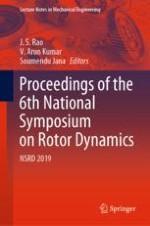2021 | OriginalPaper | Buchkapitel
Finite Element Modeling and Analysis of Coupled Rotor System Integrated with AMB in the Presence of Parallel and Angular Misalignments
verfasst von : R. Siva Srinivas, Rajiv Tiwari, Ch. Kanna Babu
Erschienen in: Proceedings of the 6th National Symposium on Rotor Dynamics
Verlag: Springer Singapore
Aktivieren Sie unsere intelligente Suche, um passende Fachinhalte oder Patente zu finden.
Wählen Sie Textabschnitte aus um mit Künstlicher Intelligenz passenden Patente zu finden. powered by
Markieren Sie Textabschnitte, um KI-gestützt weitere passende Inhalte zu finden. powered by
